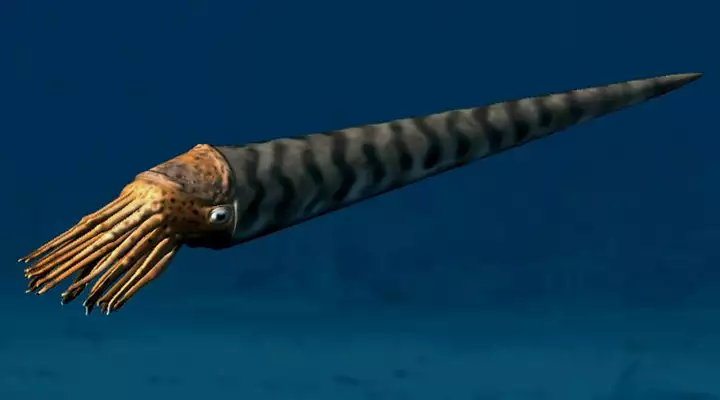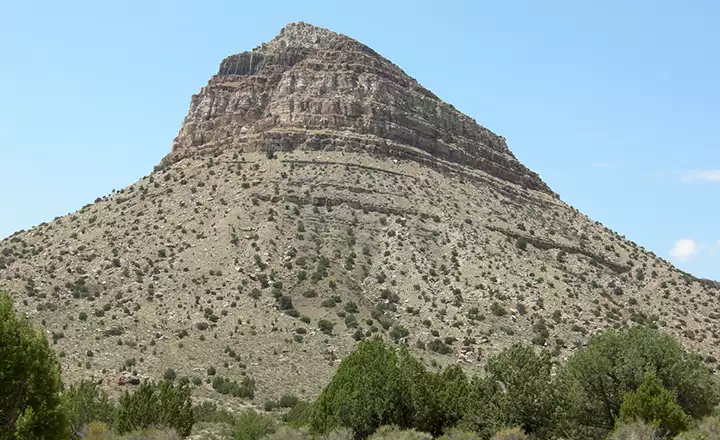The Paleozoic Era

Artist's rendition of an orthoceras, a marine creature from the Ordovician Period
The Paleozoic Era spanned six geological periods, a time span reaching from about 541 million years ago to about 252.17 million years ago, the longest era in the Phanerozoic Eon we are presently living in.
The era began with an explosion of marine life in the Cambrian period and lasted through several major extinction events, ending with the Permian-Triassic Extinction Event, the most all-encompassing of the "Big 5" species die-offs recorded in the geological story.
The Rise of Complex Life Forms
Permian-Triassic Extinction Event
251-260 million years ago
Mass global extinction takes place in several pulses over several million years. About 95% of all species die off
- Cisuralian
- Guadalupian
- Lopingian
255-280 million years ago
Major supercontinent Pangaea formed. Age of the giant hard-shelled creatures: Insects, arthropods and marine invertebrates
Alleghenian Orogeny
260-325 million years ago
Mountain building event in eastern North America as Africa crashes into the East Coast
Ancestral Rocky Mountains
~300 million years ago
Frontrangia and Uncompahgria pushed up for the first time
- Mississippian
- Pennsylvanian
280-360 million years ago
Early Carboniferous: end of Kanayuk Conglomerate deposition. Time of great rainforests and jungles, time when most of the planet's oil, gas and coal were deposited
- Early
- Middle
- Late
360-415 million years ago
Laurentia collided against Baltica, formed minor supercontinent Euramerica, deposition of Kanayuk Conglomerate in Alaska begins. The Age of Fish
- Llandovery
- Wenlock
- Ludlow
- Pridoli
415-440 million years ago
Recovery from Snowball Earth
Ordovician-Silurian Extinction Event
440 million years ago
60% of marine invertebrates and 25% of genus families die off with much of the planet iced over and glaciers reached into what is now the tropics
- Early
- Middle
- Late
440-488 million years ago
Snowball Earth began to build, Laurentia was shrinking and Baltica was growing. Ended with massive species die off as glaciers reached into the tropics
Cambrian-Ordovician Extinction Event
488 million years ago
A pulse that wiped out many brachiopod, conodont and trilobyte species
Dresbachian Extinction Event
502 million years ago
About 40% of marine genera died off
End Botomian Extinction Event
517 million years ago
About 40% of marine genera died off
- Terreneuvian
- Series 2
- Series 3
- Furongian
488-541 million years ago
Laurentia was an independent continent after the break up of Pannotia. The first great explosion of ambient life; the oceans are taken over by armored arthropods (trilobytes)

Rendition of a dimetrodon of the Permian Era
Geologically speaking, it was the breakup of the supercontinent Pannotia that led to the Cambrian Explosion. The Earth's surface land mass was then spread among a number of smaller continents for the first part of the Paleozoic Era but by the end of the era, plate tectonics had pushed all the land masses together again into a supercontinent named Pangaea. At the height of that concentration of land, the Permian-Triassic Extinction Event was triggered. Geologists have set the end of the Paleozoic Era and the beginning of the Mesozoic Era at the end of that extinction event, about 252.17 million years ago.

Fossil Mountain, Utah: Composed of shales and limestones from the Ordovician Period